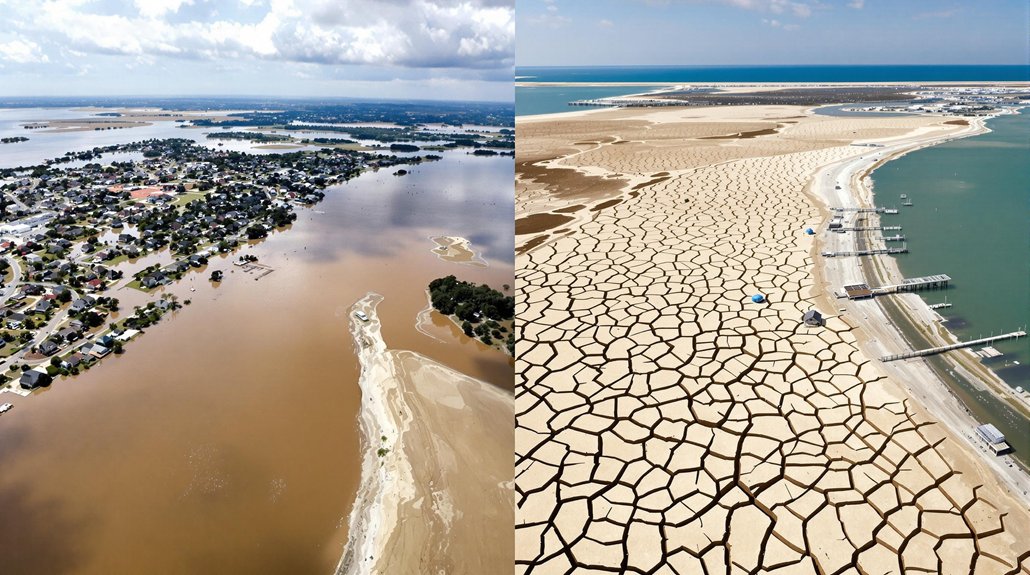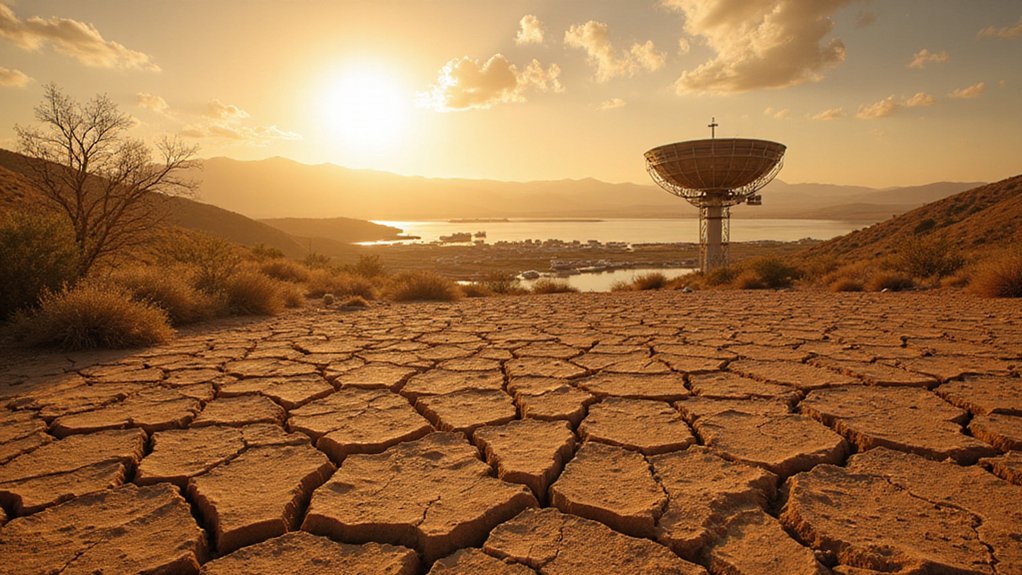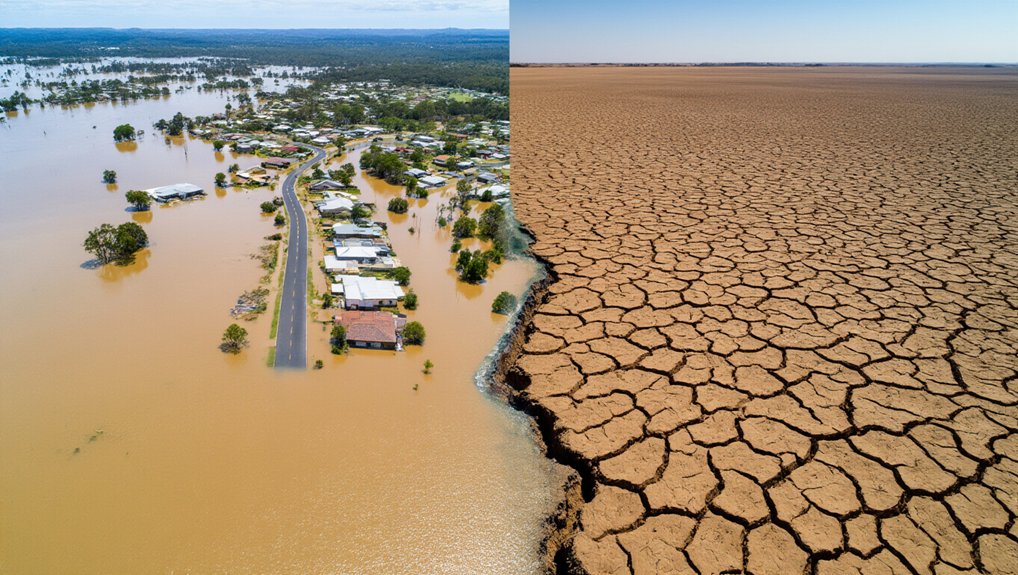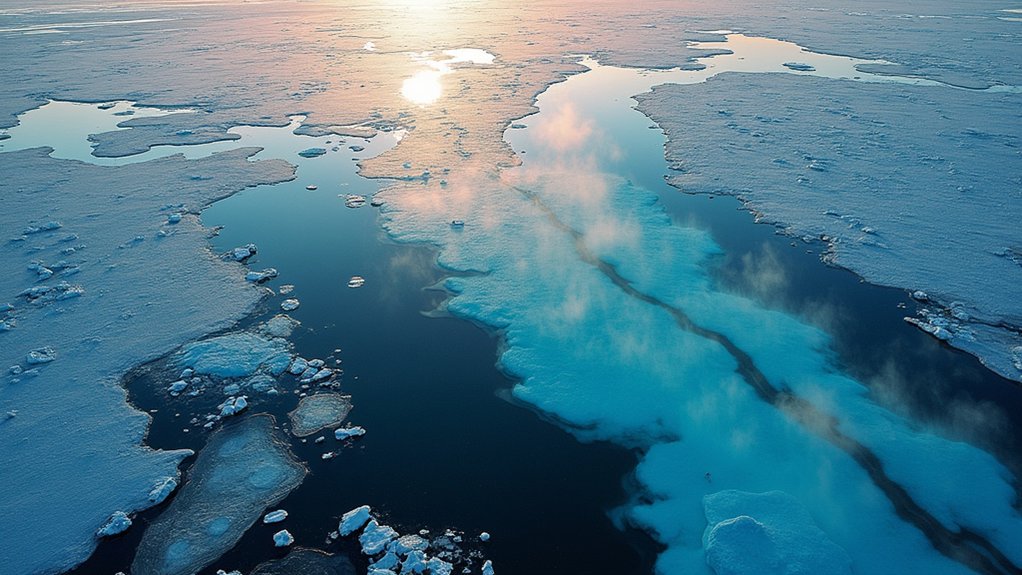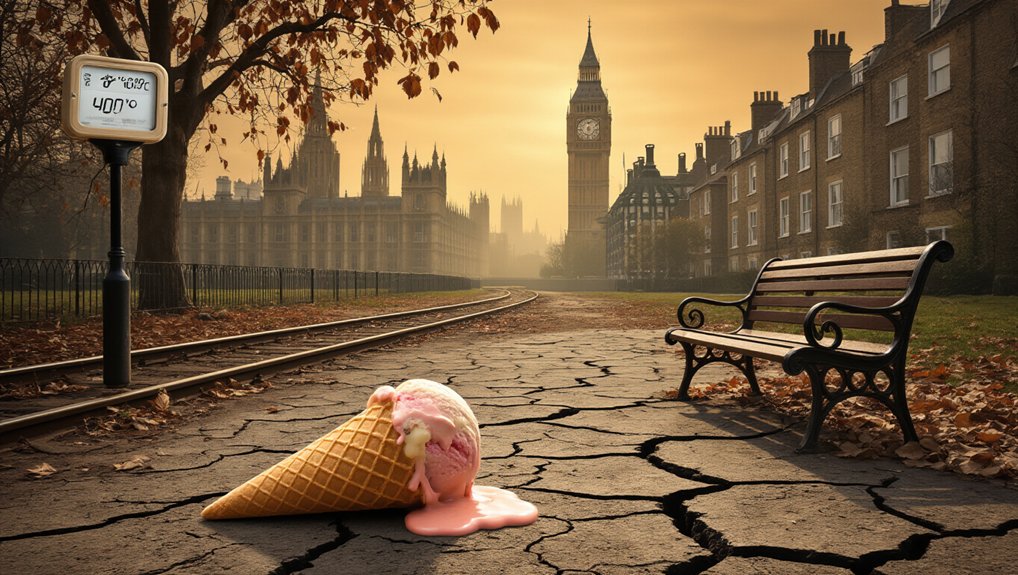While Americans have long joked about moving to the coast for better weather, that decision now comes with a soggy catch—at least on one side of the country. The East Coast is literally drowning, with coastal flooding skyrocketing since the 1950s. Some spots now see five times more floods than mid-century. It’s getting ridiculous.
Meanwhile, the West Coast is drying up. Atmospheric rivers—those massive sky-born streams of moisture—are showing up less frequently. California’s been watching its rainfall patterns shift dramatically. It’s like climate change is playing favorites, and the East Coast lost the coin toss.
The numbers don’t lie. Over 2.5 million people and 1.4 million homes across America face severe coastal flood risk by 2050. Florida, New York, and New Jersey top the list of soon-to-be-soaked states. July 2025 saw a staggering 1,434 flash flood warnings nationwide, the second-highest July count in four decades. Not exactly the summer fun people signed up for.
By 2050, millions of Americans will find their coastal homes underwater—literally and financially.
What’s worse? We’ve been underestimating how bad it really is. Traditional tide gauges miss a lot. In North Carolina, new land-based sensors found roads flooding for up to 128 days a year—four times higher than official estimates suggested. Recent research published in Nature Communications Earth & Environment confirms these alarming discrepancies between actual flooding events and official estimates. Surprise! Your commute is underwater way more often than the government thought.
High tide flooding has become as routine as morning coffee for East Coast residents, with some areas seeing a 250% jump in annual flood days since 2000. And it’s not just during storms. “Sunny day flooding” is increasingly common but often flies under the radar of official metrics.
NOAA predicts an above-normal 2025 Atlantic hurricane season, because the East Coast clearly needed more water problems. Record overnight temperatures across the Eastern U.S. are pumping more moisture into the atmosphere, creating perfect conditions for torrential downpours.
Particularly concerning is the fact that older adults make up a disproportionate percentage of those at risk, with 22 percent of the vulnerable coastal population being seniors despite representing only 16% of the total coastal state population. The growing need for data centers to support AI development further complicates matters as they consume millions of liters of water daily in regions already struggling with resource allocation.
The climate’s redistribution plan is clear: too much water in the East, not enough in the West. Mother Nature’s rebalancing act isn’t exactly subtle—or fair.
References
- https://tidesandcurrents.noaa.gov/high-tide-flooding/annual-outlook.html
- https://news.ncsu.edu/2025/06/more-frequent-coastal-flooding/
- https://www.epa.gov/climate-indicators/climate-change-indicators-coastal-flooding
- https://www.climatecentral.org/climate-matters/new-us-coastal-risk-map-and-analysis
- https://www.ncei.noaa.gov/news/national-climate-202507
